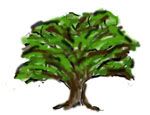Having a dog can be expensive and resource-heavy. Dogs are omnivores, but they are closer to true carnivores than humans are. Most animal nutritionists will say that dogs require about 75% meat and bone content to 25% vegetable content in their food, and meat is often not sustainably raised. Done in the factory farming way, it’s a huge contributor to pollution, to greenhouse gases, and to unclean waste production. Grains are a cheap filler, but many dogs are allergic. In my own experience, grain-free and low-carb is much better for dogs.
You won’t encounter these nutritional recommendations unless you feed commercial raw food or make your own dog food, whether it’s raw or cooked. Most people will continue to feed dried kibble, and many brands are made with some pretty yucky ingredients. There are some good brands of kibble out there (and in those, you’ll still find plenty of meat), but my own dog can’t handle any kind of kibble or any kind of grain. She’s a delicate flower with a highly sensitive stomach and allergies, you see.
Dog waste disposal is another green living pitfall. Most of us pick up waste in plastic bags, either because we want it out of our yards or because it’s required by law in our areas or some combination of the two, and those plastic bags never biodegrade. The poop stays in plastic bags in landfills for some undetermined amount of time. Perhaps forever. Millions of plastic bags full of poop – scary thought, isn’t it? On the other hand, dog poop isn’t the safest substance known to humans. They aren’t herbivores, so it can contain pathogens, and they can safely excrete some e. coli and salmonella-type bacteria that’s dangerous to humans.
And let’s not forget vet bills. Those are expensive and insurance isn’t always the solution.
So what can we do to raise green dogs – no matter what color their fur really is? In large part, that’s going to vary from family to family. It depends on where you live, how many and what kind of animals you have, and how much money you have to spend. In urban areas, our pet food needs may be the same, but our waste issues are different from those in ex-urban and rural areas. Herbivore waste can be composted in any compost bin, whether it goes on edible plants or not. The ease of our access to veterinary care and healthy, natural food varies as well – and the cost changes, depending on where you live.
We feed our dog a raw diet and I try to grow as many veggies for her as I can. The rest comes from as sustainable a method of farming as I can find, and I’m including veggies, meat/bone/organ meat, and eggs when I say that. Her favorite toy is extremely durable and made from recycled tires, and we use natural veterinary methods as much as possible. My current dilemma is dog waste, as I don’t have a good solution. But that will be a topic for a later post, and I’m going to ask my readers what they think. I’m hoping you have some innovative ideas for me.
What are some other green companion animal ideas? Readers, take it away in the comments.




